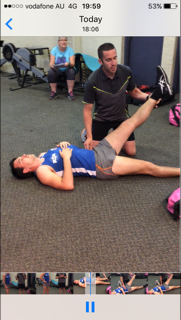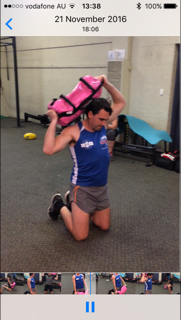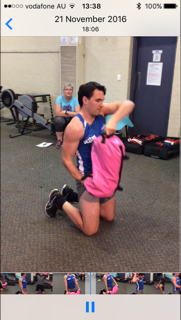Cam Ward - DVRT Master Instructor, Australia
Are your hamstrings really tight?
One of the things I love about our Dynamic Variable Resistance Training (DVRT) system is applying our movements and exercises to clients and watching their reaction when they see and feel the change. Just recently I was approached by a local football club at a competitive level to come on board and work with them over their pre season training. A very fit bunch of young fellas finished off the 2015/2016 season just short of the grand final. A series of injuries let them down in the back end of the season.
We approached the first training session and I was nervous.... what would they think? What would be the reaction?
With 30 pairs of eyes staring at me, I took a deep breath and put our system into action. “SO hands up if you have tight hamstrings?” Was my first line.
Now if you know Australian Rules Football (AFL) one of the biggest complaints in the sport is hamstring injuries or tightness.
BUT IS IT THERE HAMSTRINGS?
Yes I agree it is the hamstring that generally goes POP, but what would you say if I could give you two exercises that would assist this problem....... I know what I would say!
After asking the question a young and powerful player’s hand flew up like a young kid busting to ask a question. This player had a history of hamstring and low back issues.....
So in front of 30 footballers we tested his range of motion, gave him one exercises the tall kneeling around the world. The full test can be viewed below.
BOOM!! Jaws dropped and the reaction from the improvement in the range was awesome. I know, I know it hasn’t fixed the issue permanently. No it hasn’t but what it has shown you is to look further than the area of pain or discomfort.
So what changed?
The tall kneeling position gives us not only a firm base to work with but a greater chance of core activation. The idea behind this movement is to teach the body to resist rotation or swaying from side to side whilst the USB is moving around the head. Driving the toes into the floor lights up our glutes whilst the upper torso is controlling and resisting the action of the USB.
So what does it give us.....well with a core system activated and a stabile pelvis we have a platform ready to turn up the heat of what the year will bring.
Now where: Work on your tall kneeling around the world, read more about the progressions here or even look to bring into your program the ultimate sandbag press out squat or resisted front loaded marching.
Give it a go and let us know how you go.
Check out our upcoming workshops where we will go into further detail of some of the most common DVRT Ultimate Sandbag exercises.
Until next time
Cam Ward
DVRT Master Australia











